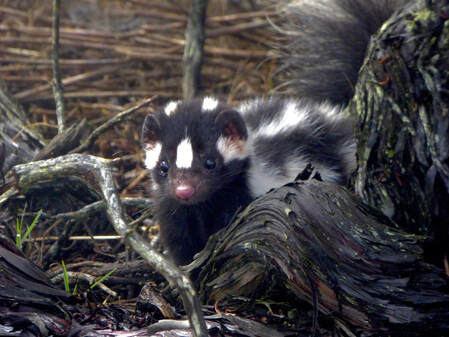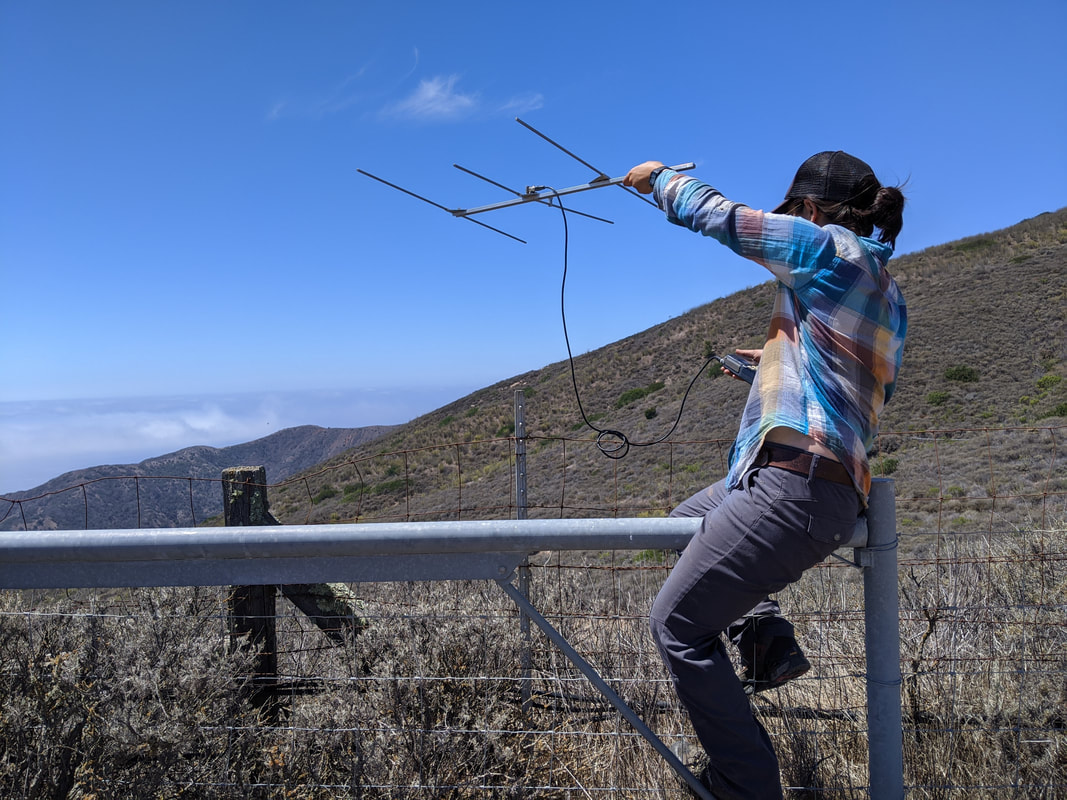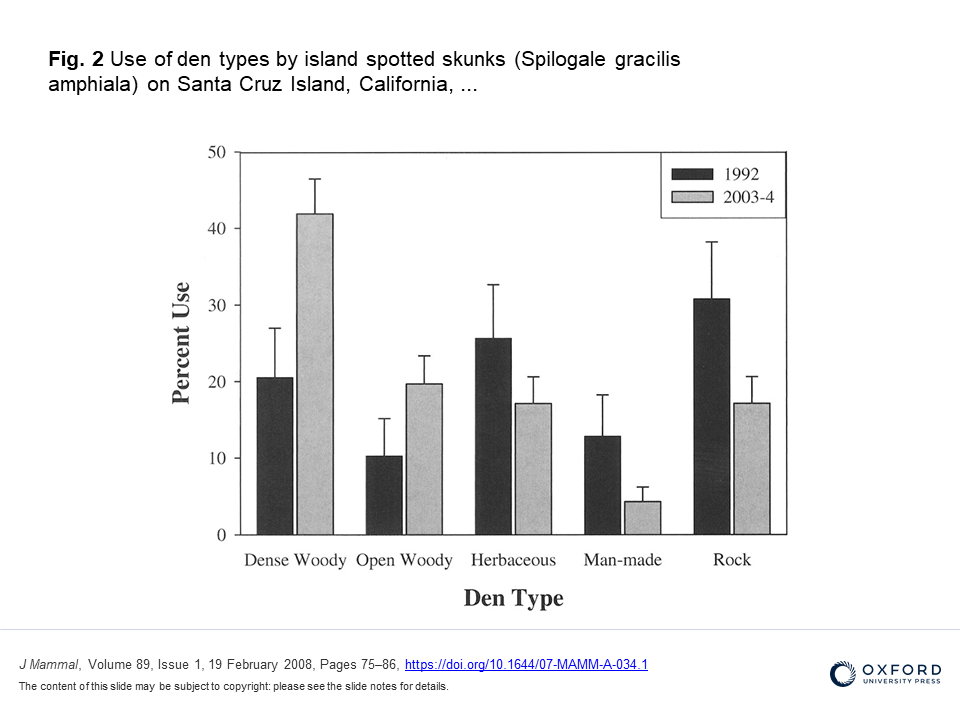Island Spotted SkunkSRare & Mysterious carnivores |
About ISLAND SPOTTED SKUNKS
|
Island spotted skunks (Spilogale gracilis amphiala) are small carnivores that live only on Santa Cruz and Santa Rosa, two islands in the Channel Islands archipelago off the coast of California, USA. These striking, yet cryptic mammals may have also lived on nearby San Miguel Island, but haven't been seen there since the late 19th century.
Spotted skunks probably colonized the Channel Islands over 9,000 years ago, when the sea level was lower than it is today. |
About The Working GROUPThe Island Spotted Skunk Working Group is a forum for researchers, biologists, and land managers to exchange ideas, share research, collaborate on projects, and discuss relevant issues regarding the island spotted skunk. As of 2023, the Working Group is composed of 66 members representing 19 universities, five government agencies, and seven NGOs.
|
Projects
There's still so much to learn about island spotted skunks. Members of the Island Spotted Skunk Working Group are actively pursuing research that will help us conserve this cryptic mesocarnivore. Learn more about ongoing research here:
|
|
|
|
|
Resources
|
If you're interested in learning more about island spotted skunks, a number of resources, reviews, reports, and scientific publications can be found here:
|
Blog
In this video, island spotted skunk biologists place a new radio collar on a skunk captured near her den on Santa Cruz Island.
CONTACT US |
|
|






